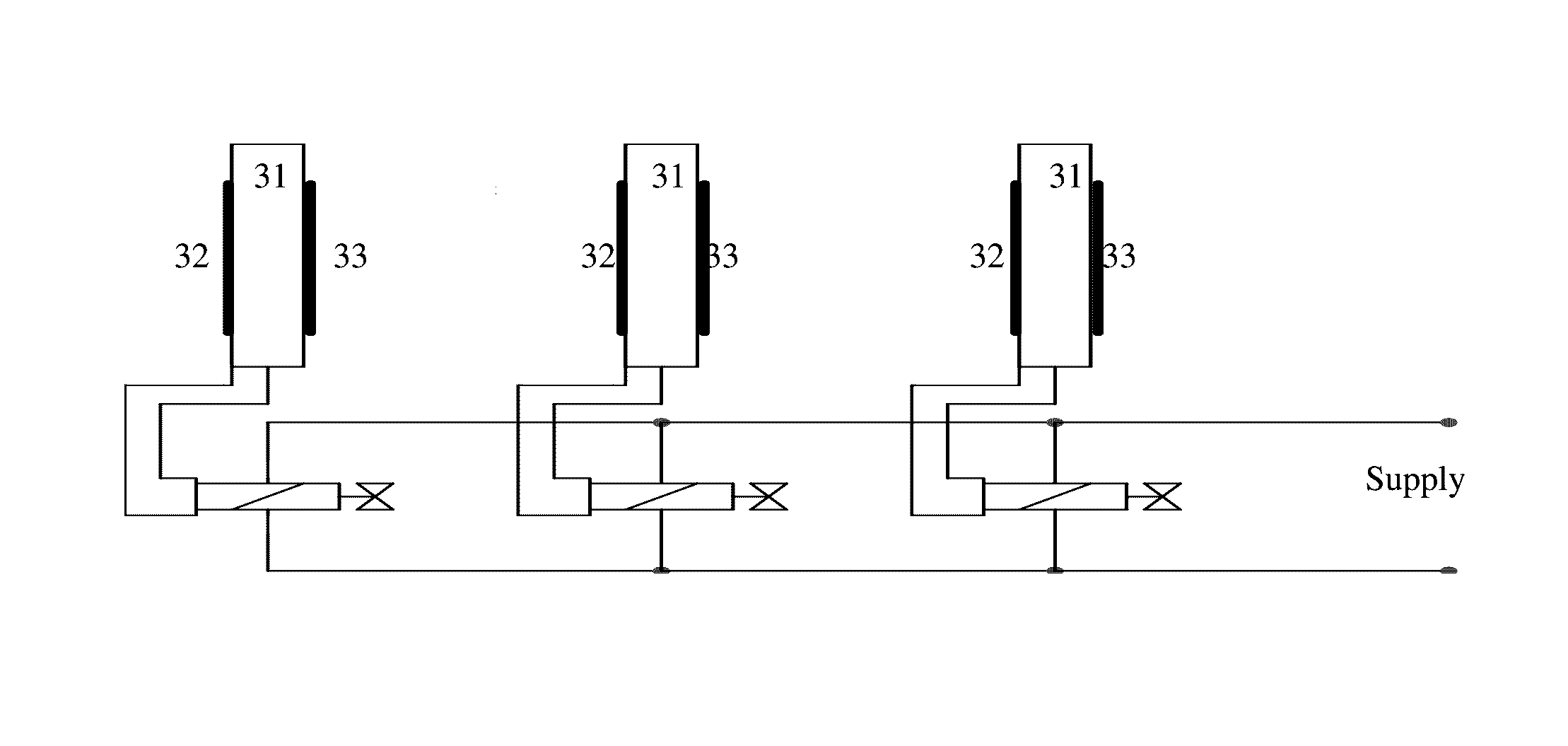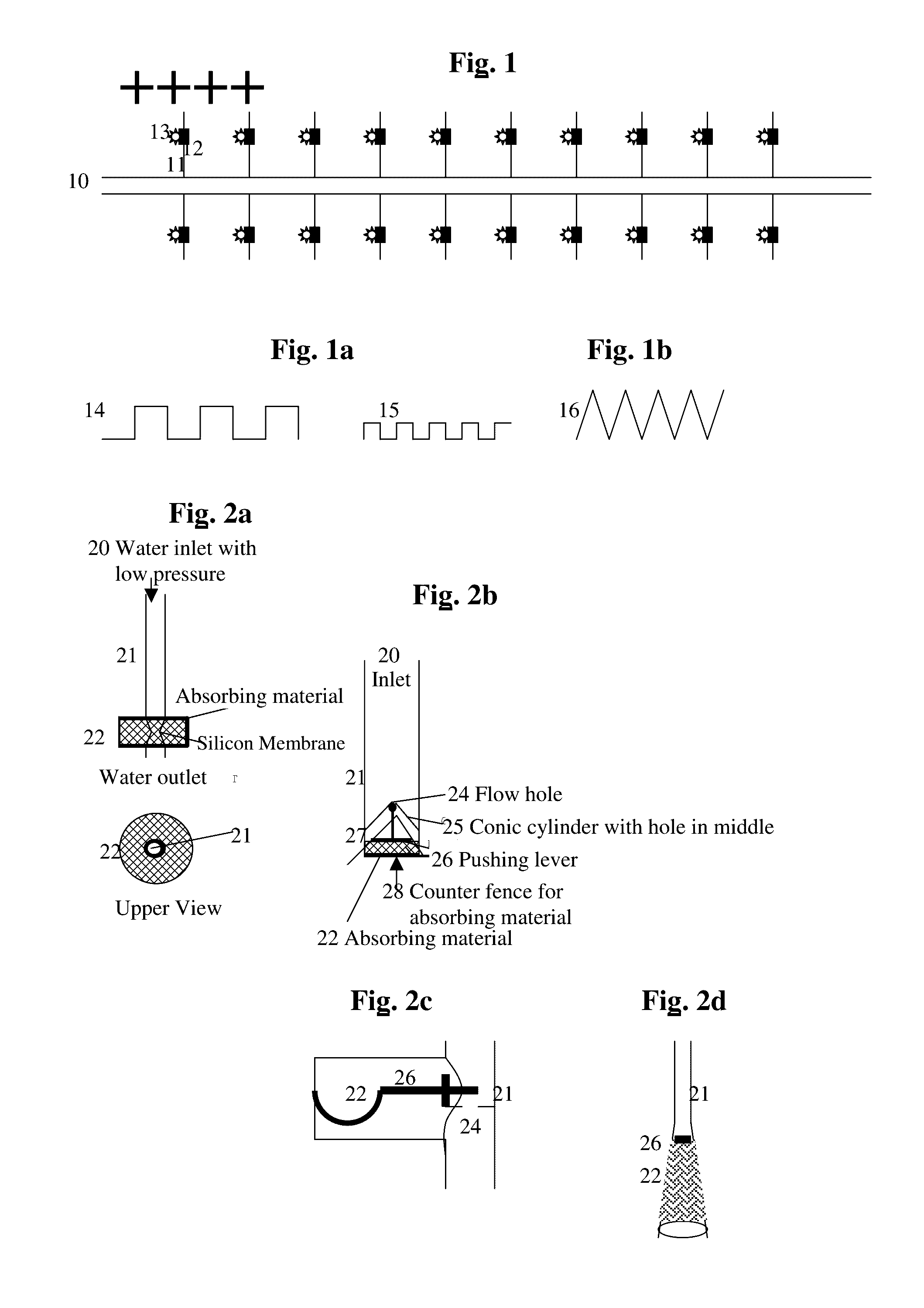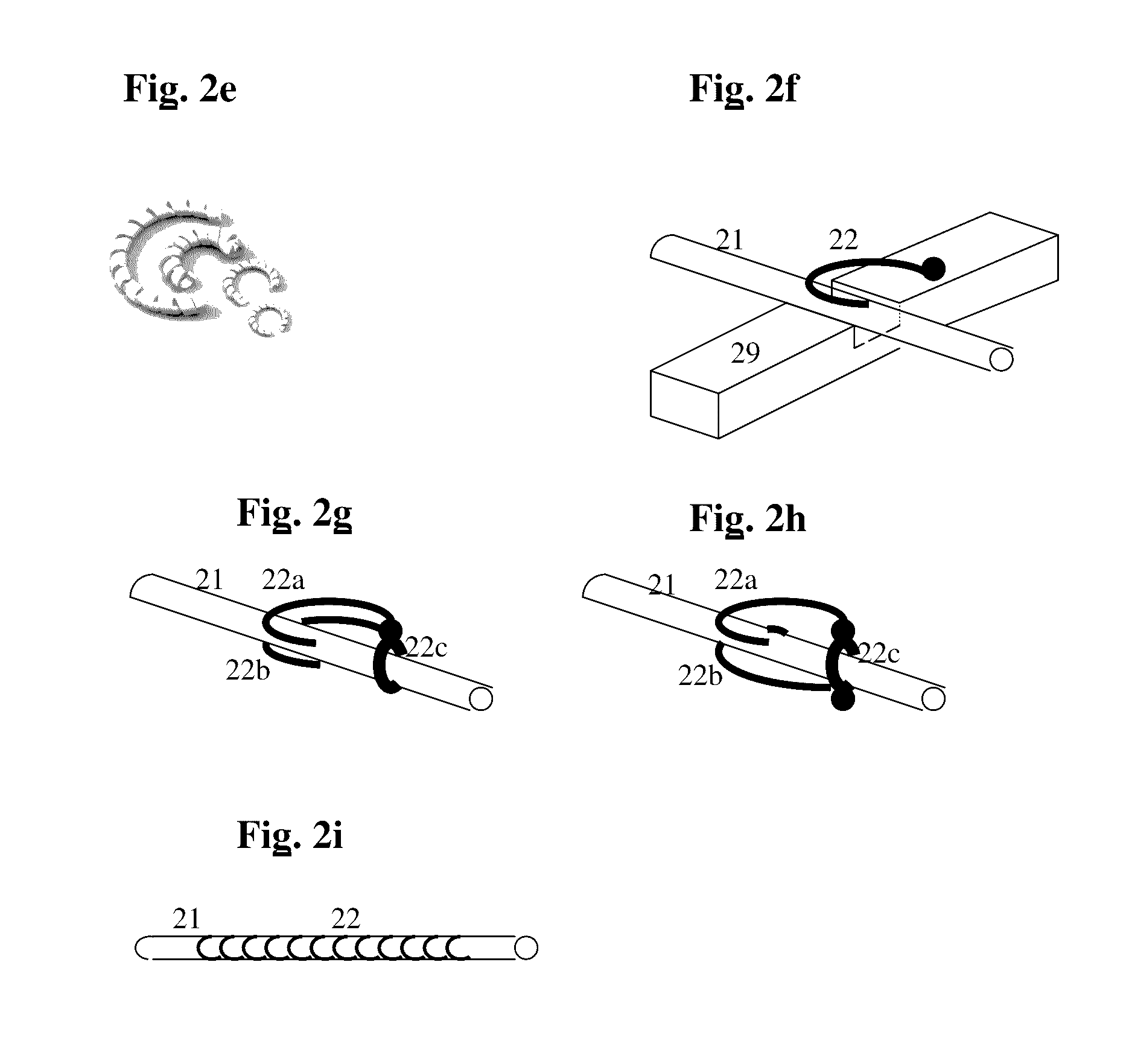System and method for more efficient automatic irrigation based on a large number of cheap humidity sensors and automatic faucets
a technology of automatic irrigation and humidity sensor, which is applied in the field of automatic irrigation with humidity sensors, can solve the problems of less efficiency and 2 options, and achieve the effects of saving work and time, reducing labor intensity, and improving efficiency
- Summary
- Abstract
- Description
- Claims
- Application Information
AI Technical Summary
Benefits of technology
Problems solved by technology
Method used
Image
Examples
Embodiment Construction
[0025]All of descriptions in this and other sections are intended to be illustrative examples and not limiting.
[0026]Referring to FIGS. 1 & 1a-b, we show a top-view illustration of a preferable general configuration of a main pipe (10) with sufficient water pressure (such as for example 1 or a few atmospheres) which extends into smaller channels that go for example sideways (11) with a preferably much lower pressure that are preferably each controlled by its own cheap humidity sensor (13) and cheap valve (12). Each such side-channel can go for example to an individual plant, or to a preferably small area surrounding a number of plants, as desired by the user. This way, the valve (12) that is needed to control each of these small channels (11) needs much less force and therefore can be much cheaper than an ordinary electronic faucet (solenoid), which typically contains a motor and is designed to deal with much higher pressures. Preferably the sensors are not too close to the end of t...
PUM
 Login to View More
Login to View More Abstract
Description
Claims
Application Information
 Login to View More
Login to View More - R&D
- Intellectual Property
- Life Sciences
- Materials
- Tech Scout
- Unparalleled Data Quality
- Higher Quality Content
- 60% Fewer Hallucinations
Browse by: Latest US Patents, China's latest patents, Technical Efficacy Thesaurus, Application Domain, Technology Topic, Popular Technical Reports.
© 2025 PatSnap. All rights reserved.Legal|Privacy policy|Modern Slavery Act Transparency Statement|Sitemap|About US| Contact US: help@patsnap.com



